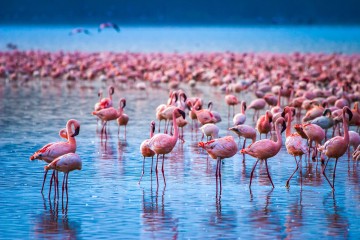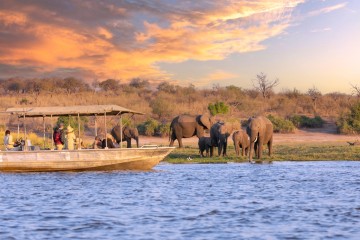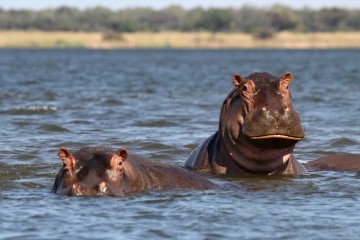Spotting iconic animals on an African safari is an exhilarating thrill, yet witnessing their collective movement is an altogether mesmerizing experience. Across the continent, animal migrations bring life to the land in ways that are almost impossible to describe. Whether it's millions of wildebeest crossing crocodile-infested rivers, fruit bats blanketing the sky, or humpback whales making record-breaking journeys, Africa's animal migrations are among nature's most fascinating phenomena. Witnessing one, first hand, is an experience like no other.
Here's your guide to the best animal migrations in Africa, when to see them, and what to expect.
- The Great Migration in East Africa
- Elephant Migrations, Kenya
- Zebra Migration, Botswana
- Fruit Bats Migration, Zambia
- Flamingos, the Rift Valley
- Whale Sharks Migration, Mozambique
- Humpback Whales Migration, Mozambique
- What to Expect from Africa’s Wildlife Migrations
The Great Migration in East Africa
Animals: Wildebeest, zebras, and gazelles
Location: Serengeti (Tanzania) → Masai Mara (Kenya)
When: Year-round, with peak river crossings in July–September
Why: Following seasonal rains and fresh grazing lands
Experience: East Africa safaris
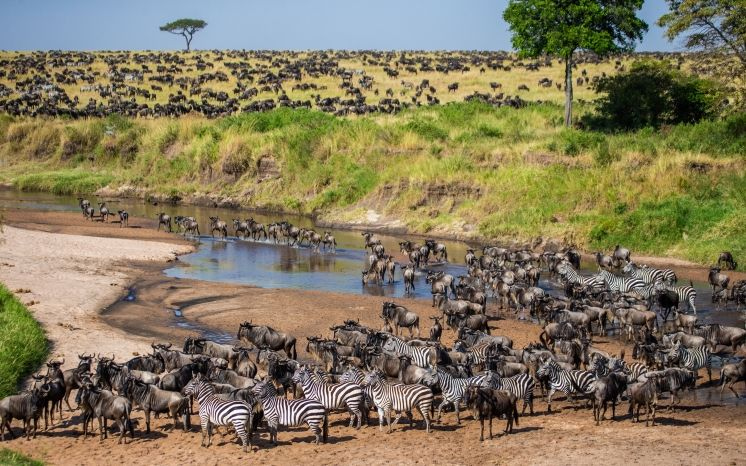
Serengeti river crossing.
The most famous of all the animal migrations in Africa, the GREAT migration is the one on most people's bucket lists. And who'd ever argue? This year-round movement of over a million wildebeest, zebras, and gazelles across Tanzania’s Serengeti and Kenya’s Masai Mara is the stuff of legends.
If you’ve dreamed of seeing the famous river crossings, plan your visit between July and October, when the animals brave the crocodile-filled waters of the Mara and Grumeti Rivers. Outside of this period, you can still witness calving season in the southern Serengeti from January to March or follow the herds as they graze their way north.
Whichever season you choose, the Masai Mara and Serengeti are stunning landscapes where you are bound to see plenty of wildlife.
Insider Tip: If you're not a fan of big crowds, the western corridor of the Serengeti in May and June is a great alternative—just ask Viva's Destination Specialist Tara, who explored the region during this quieter window. While the grass is longer, there are still elephant families and lion prides roaming, fields of zebra and wilderbeest grazing, and Tara even spotted a rare elusive serval cat.
Read more about Taras trip to Tanzania in May here.
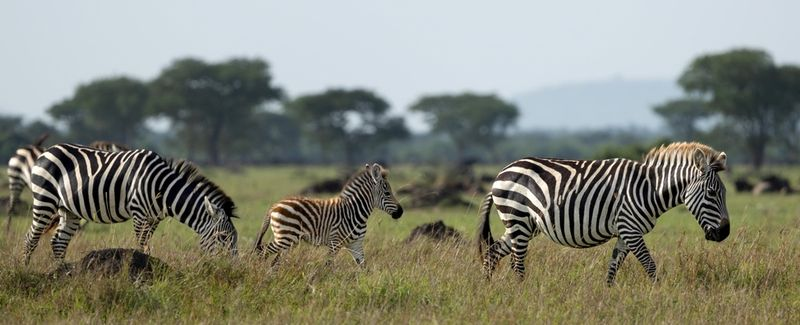
The numbers are huge, perhaps there are over 1.2 million wildebeest and 300,000 zebra that move in a constant cycle through the Serengeti-Mara ecosystem in search of nutritious grass and water.
Elephant Migrations, Kenya
Animals: African elephants
Location: Kenya, primarily, also in Botswana, Zimbabwe, Namibia
When: Dry season (May–October), June to September is peak migration
Why: Searching for water and food
Experience: Kenya safaris
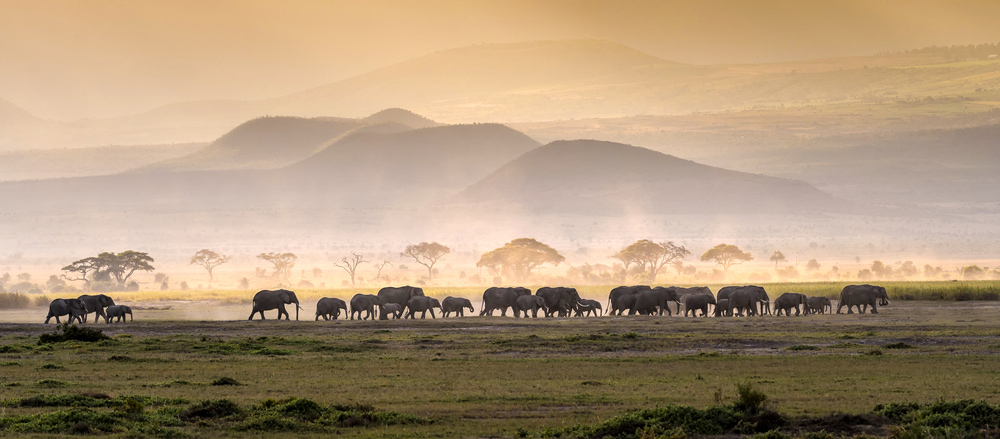
Elephant herd in Serengeti savanna - National Park in Tanzania
Elephants might be best-known for their intelligence and tight-knit family bonds, but what drives their migration is their innate need to search for water sources. In Kenya, large herds move across the Amboseli, Tsavo, and Chyulu Hills ecosystems from June to September, covering vast distances to find fresh nourishing grazing lands. The animals' famed memory helps them recall water sources and migratory routes year after year. Their footprints create natural "paths" in the ecosystem, which other animals and even humans use to navigate the wilderness.
Visit between June and September to see these gentle giants in some of Kenya's most iconic landscapes, with Mount Kilimanjaro often providing a stunning backdrop. Amboseli National Park is one of the best reserves for elephant spotting, thanks to its vast open plains and dependable water holes.
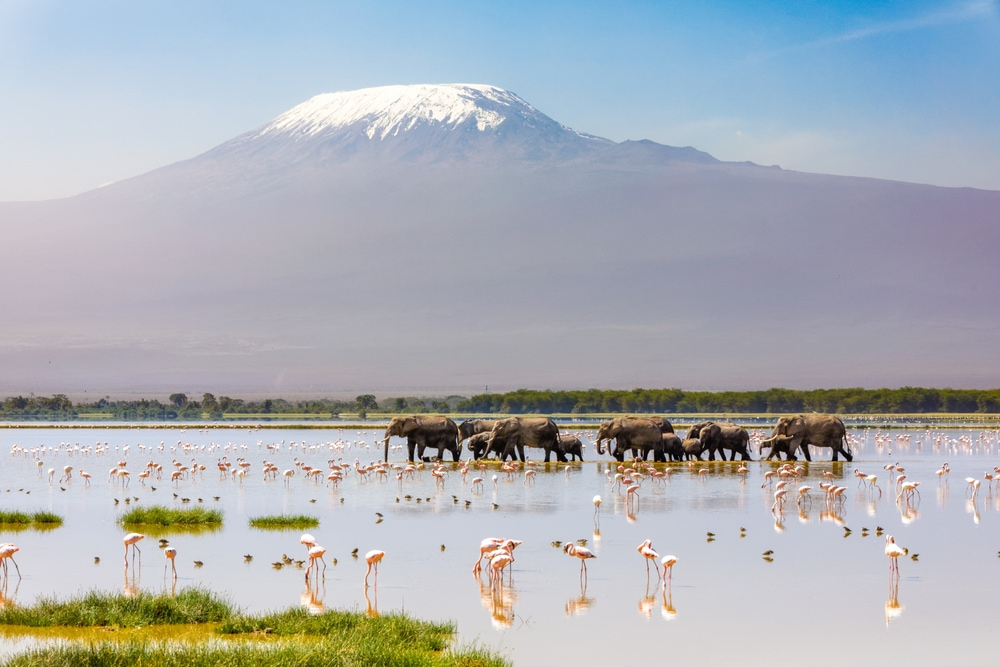
Elephant matriarchs, the oldest and most experienced females, lead their herds during migrations.
Insider Tip: For an immersive experience, join walking safaris in remote areas of Tsavo National Park. Local guides are apt at tracking elephant herds on foot.
Zebra Migration, Botswana
Animals: Plains zebras
Location: Okavango Delta → Makgadikgadi Pans
When: November–March (wet season) & April–October (dry season)
Why: Moving between water sources and food availability
Experience: Botswana tours
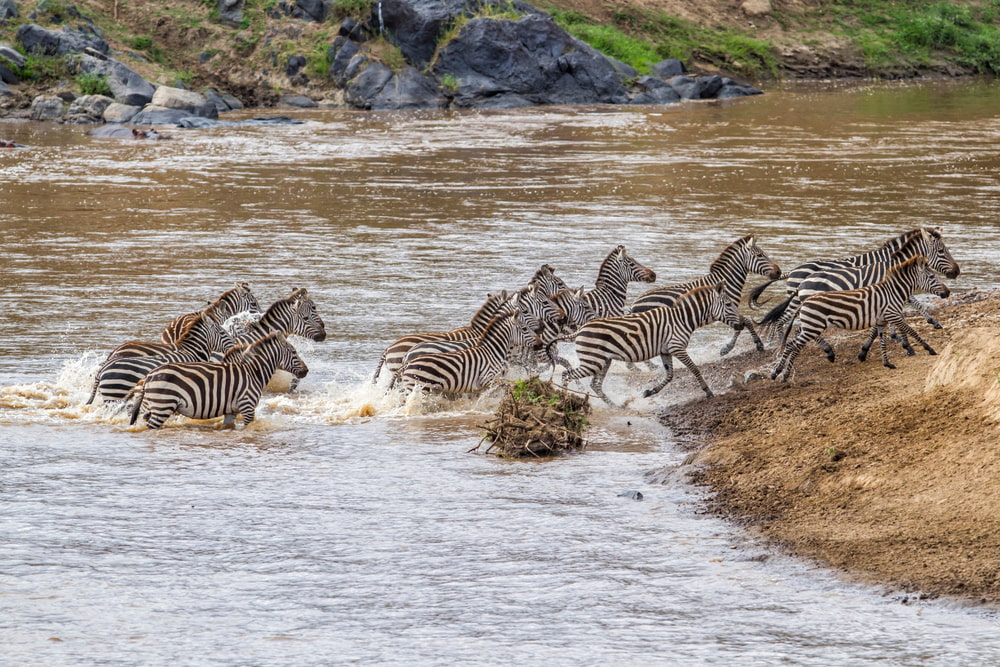
Group of Zebra crossing the river.
From December to April, the rains transform Botswana's Makgadikgadi Pans and Nxai Pan into sweeping green grasslands, and that's when the zebra migration arrives. Thousands of them, trailed by wildebeests, make the journey to feast on the fresh vegetation, creating a quiet but spectacular movement across the pans.
The peak of the migration, from January to March, is especially dramatic, with herds stretching to the farthest horizon your eyes could ever see. You’ll want to time your visit around this season for the best wildlife viewing, and the stunning landscapes of the pans only add to the magic.
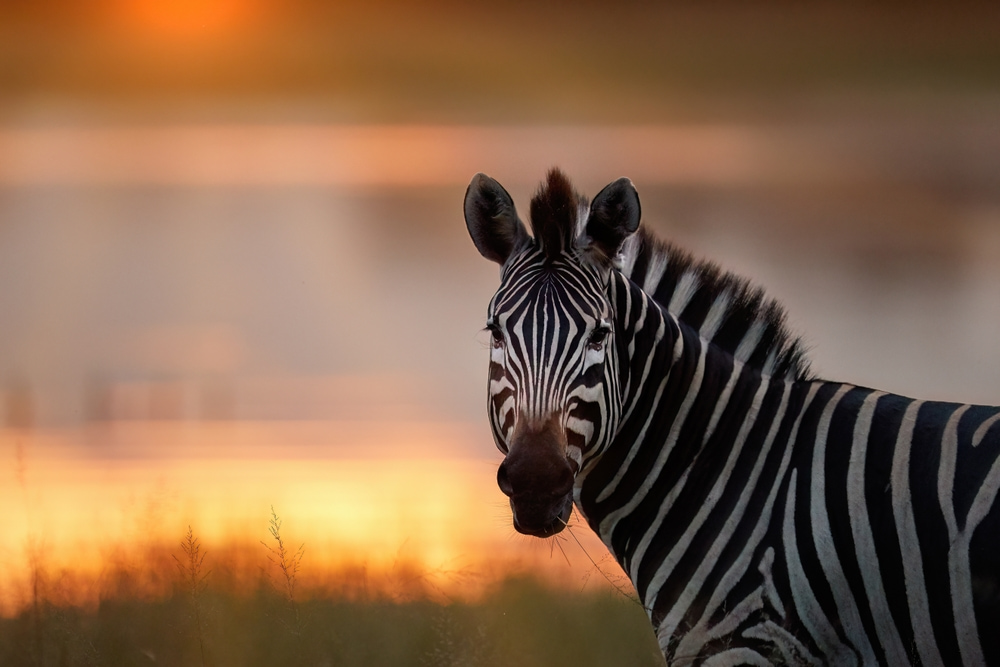
The zebra migration across the Makgadikgadi and Nxai Pans is the longest land migration in Africa, covering up to 500 kilometres.
Insider Tip: To see the zebra migration in its full splendour, stay at one of the well-positioned camps in Nxai Pan National Park. Jack's Camp (one of Viva’s Unique Stays), San Camp, and Camp Kalahari all offer exceptional access to the herds as they move through the region.
Fruit Bats Migration, Zambia
Animals: Straw-colored fruit bats
Location: Democratic Republic of Congo → Zambia
When: October–December
Why: Arriving in Kasanka to feed on seasonal fruit
Experience: Zambia tours with visits to Kasanka National Park
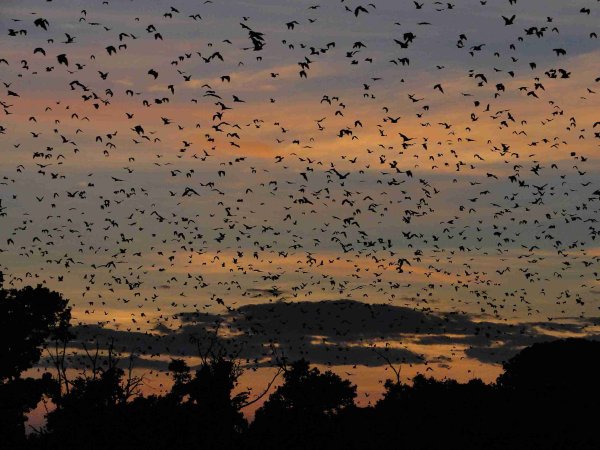
One of Africa's most astonishing migrations doesn't happen on land or sea but unfolds in the skies. Each year, millions of straw-coloured fruit bats gather in Zambia's Kasanka National Park, roughly between late October and December.
Watching countless bats roost in the park's trees during the day is already extraordinary, but the real show starts at sunset. As the sun dips beyond the horizon, millions of bats take flight together, putting on a breathtaking show. With around eight million bats involved, it's a sight no avid chiropterophile would want to miss!
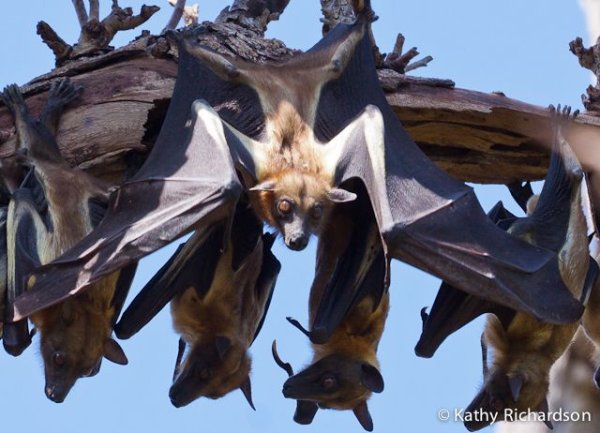
The Kasanka bat migration involves over 10 million straw-coloured fruit bats (or sky-puppies), making it the largest mammal migration in the world by number.
Insider Tip: For a unique vantage point on the bat migration in Kasanka, head up to one of the park's viewing platforms at dusk. Set above the treetops, they offer sweeping views just as millions of bats burst into the evening sky.
Flamingos, the Rift Valley
Animals: Lesser flamingos
Location: Rift Valley lakes (Kenya, Tanzania, Ethiopia)
When: Dependent on water levels and breeding season
Why: Seeking optimal conditions for feeding and breeding
Experience: Tanzania safaris with Lake Natron inclusion
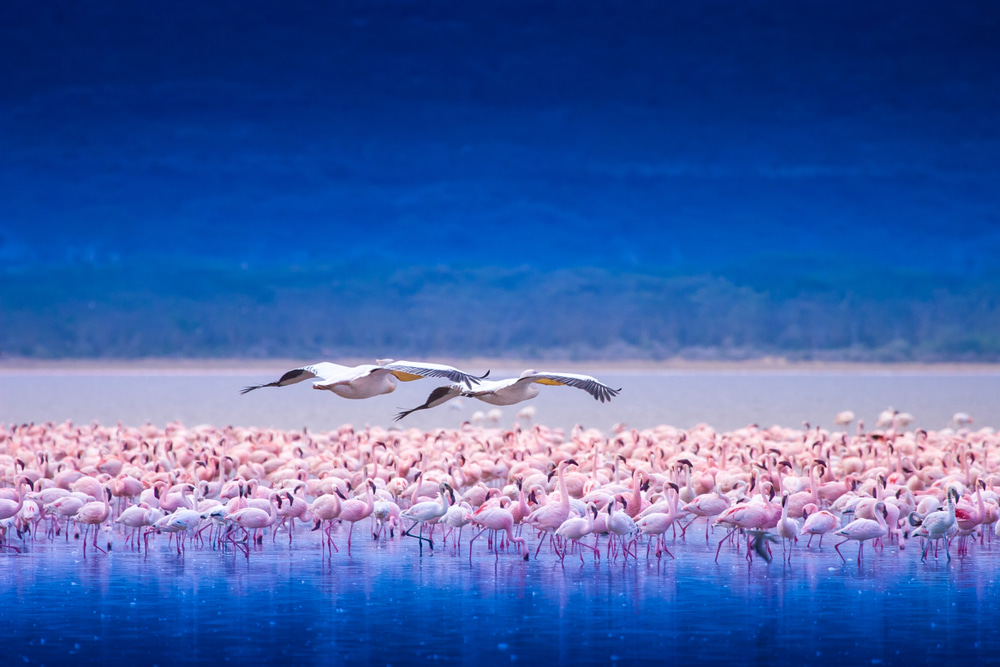
When you picture Africa’s Rift Valley, you might imagine flocks of pink flamingos crowding the edges of soda lakes. Between July and September, this vision bursts to life as flamingos gather at Lake Natron in Tanzania, and lakes Nakuru and Bogoria in Kenya.
These lakes, rich in algae, attract flamingos in their thousands, turning the shorelines into a sea of pink. The best time to see them is during the dry season when water levels drop, and the flamingos concentrate in larger numbers. Don't forget your camera—this is one of Africa's most photogenic animal migrations.
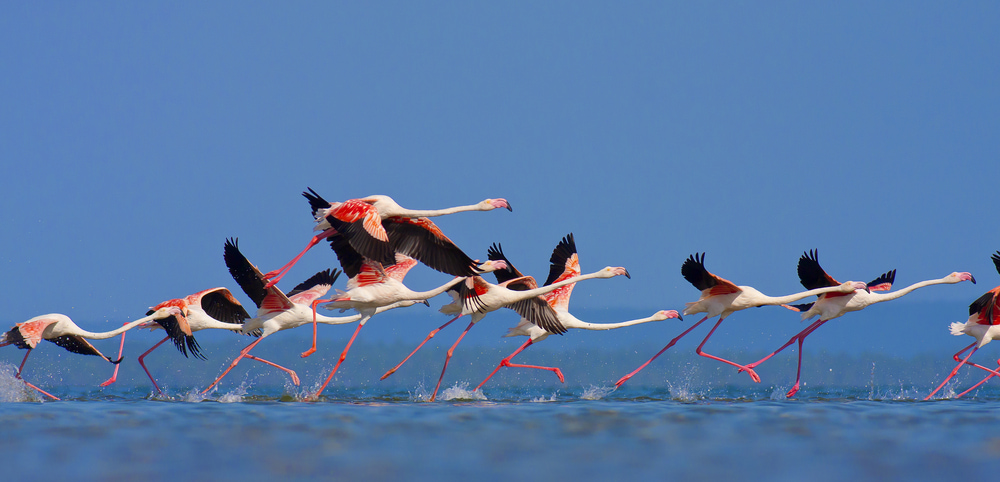
Flamingos are highly social birds that use synchronized movements, like "dances," to strengthen bonds and attract mates. Dance like nobody’s watching!
Insider Tip: To capture the best photographs of the flamingos, visit the lakes in the early morning when the light is soft and the birds are most active. Don't forget to pack a pair of binoculars - thousands of pink flamingos standing together tend to blur the minutest details.
Whale Sharks Migration, East Africa
Animals: Whale sharks (Rhincodon typus), manta rays, dolphins
Location: Mafia Island in Tanzania, Tofo Beach (Inhambane) & Bazaruto & Quirimbas Archipelago in Mozambique
When: October–March (peak season), occasional sightings year-round
Why: Warm waters and plankton-rich currents make it a prime feeding ground
Experience: Boat, snorkelling and diving tours
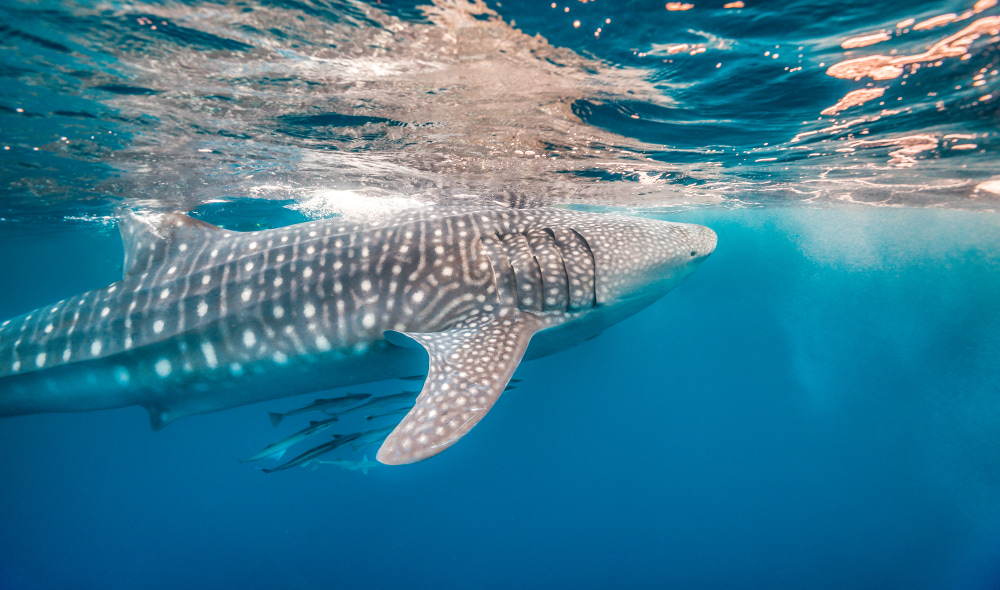
Whale sharks are the ocean's gentle giants—slow-moving, speckled, and strangely graceful for their size. Along the East African coast, they follow the seasonal rhythm of plankton blooms, gliding through warm waters in search of their next feast. Their journeys, shaped by shifting currents and water temperatures, remain something of a mystery to biologists, but that only adds to the magic of witnessing one in action.
Between October and March, your chances of spotting them rise. In places like Tofo Beach in Mozambique or Mafia Island in Tanzania, whale sharks are known to cruise close to the surface, offering unforgettable moments for those lucky enough to snorkel alongside them. While nature plays by its own rules and nothing’s ever guaranteed, these coastal hotspots are among the most reliable for a front-row seat to this slow-motion spectacle.
Despite their size—reaching up to 12 meters in length—whale sharks are peaceful filter feeders, and swimming alongside them is an awe-inspiring experience. Expect to share the water with an abundance of tropical fish, turtles, and even dolphins and enjoy the most immersive animal migration trip in Africa!
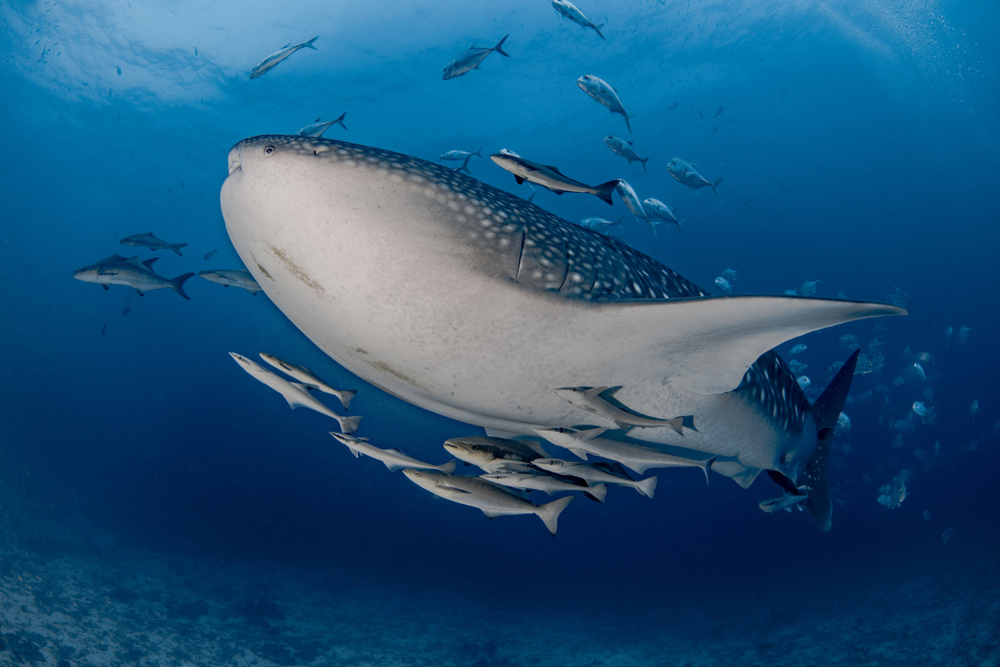
Whale sharks might be dauntingly huge, but their teeth are vestigial and are not used for feeding. Their gills filter up to 6,000 litres of water per hour to capture plankton
Insider Tip: Plan your visit around the new moon phase to maximize your chances of seeing and swimming alongside these gentle giants. Plankton concentrations are higher at this time, attracting even more whale sharks. Since seas are generally calmer and visibility better in the morning, book an early excursion. By midday, the sun can cause considerable glare underwater.
Humpback Whales Migration, Mozambique
Animals: Humpback whales (Megaptera novaeangliae), manta rays, dolphins
Location: Tofo Beach, Bazaruto & Quirimbas Archipelago
When: June–November (migration and calving season)
Why: Migrating from Antarctica to warm Mozambican waters for breeding and giving birth
How: Boat tours, whale-watching excursions, or spotting from shore
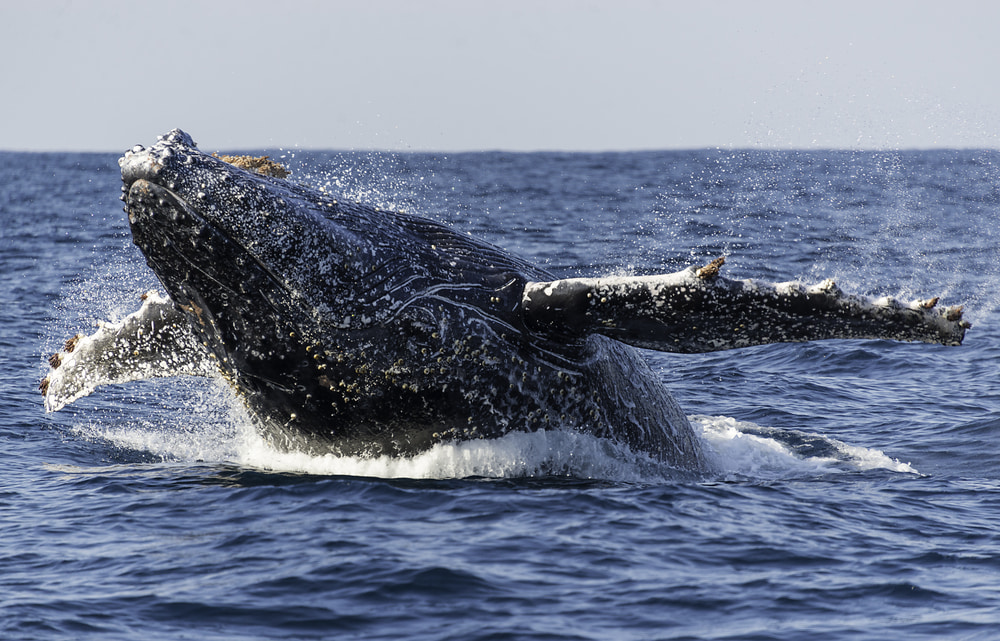
Just as whale shark season winds down along Mozambique's coast, the focus shifts to the humpback whales. From June to November, these majestic giants arrive in the warm waters to breed and give birth, filling the sea with powerful breaches and haunting songs.
The absolute best time to visit is from July to September, when you're most likely to see them breaching and tail-slapping.
Although you can spot these animal migrations from the shore, boat tours are your best bet for a closer look. If you dive or snorkel nearby, you might even hear their haunting songs, said to travel dozens of kilometres, echoing underwater.
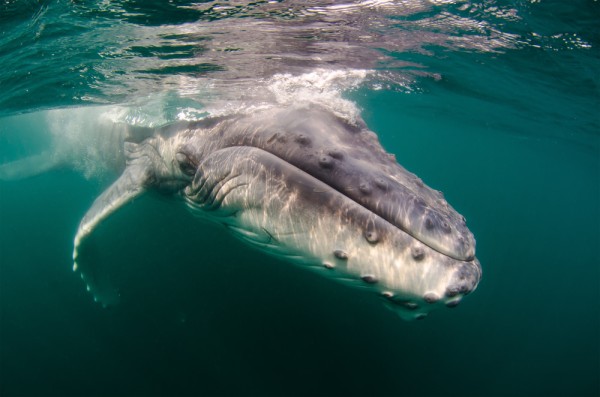
Humpback whales undertake one of the longest animal migrations of any mammal, travelling up to 16,000 kilometres round-trip annually.
Insider Tip: Tucked away in northern Mozambique, the Quirimbas Archipelago offers a quieter, more intimate escape. Traditional dhow sailing trips here are slow, peaceful, and impossibly serene. Ask us how we can help you plan the perfect visit!
What to Expect from Africa's Wildlife Experiences
Planning to follow the migrations? Be ready for early mornings, plenty of time in the field, and an appreciation for the unpredictable. Animals don't move on a strict schedule, and things get more erratic as the years pass. Patience is key, but that just makes the whole experience even more rewarding.
It’s also worth checking what the weather will be like when and where you’re going. Conditions can vary a lot, from the humid coasts in Mozambique to the dry plains in East Africa.
If you'd love more tailored itinerary advice or wish to visit a destination not on our list or suggested itineraries, Viva Expeditions is here. Our Destination Specialists, who have experienced a variety of animal migrations in Africa, are best placed to give tips and help you plan an unforgettable adventure.
Contact us today!
Laura Pattara
Laura Pattara has guided overland trips across Africa and now focuses her writing on the continent for Viva Expeditions. She once camped beneath a marula tree that an elephant tore apart during the night, yet somehow she still sleeps best in a tent. But make it glam! From sunrise balloon rides over the Serengeti to following the rhythms of wildlife migrations, Laura brings the wild heart of Africa to life with warmth, depth, and the occasional muddy boot.
|
